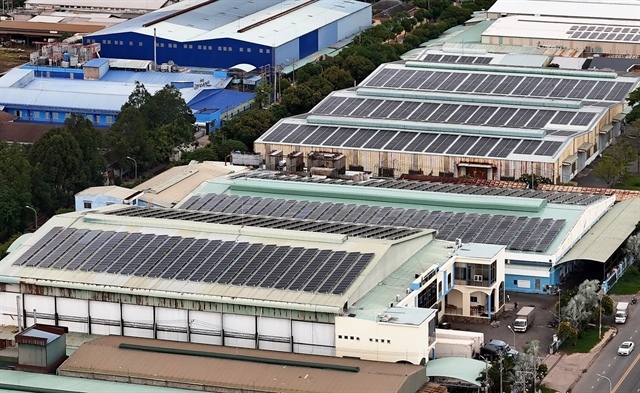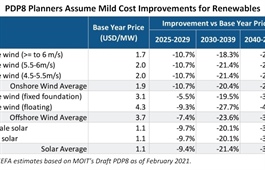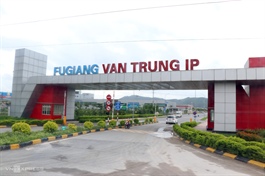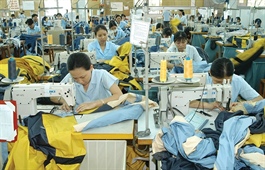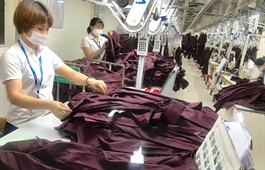More Vietnamese goods sourced by US groups
More Vietnamese goods sourced by US groups
More American buyers are seeking out made-in-Vietnam goods in a bid to diversify their supply chains, making Vietnam an emerging alternative source destination in the region that could further profit from the bilateral trade relationship.
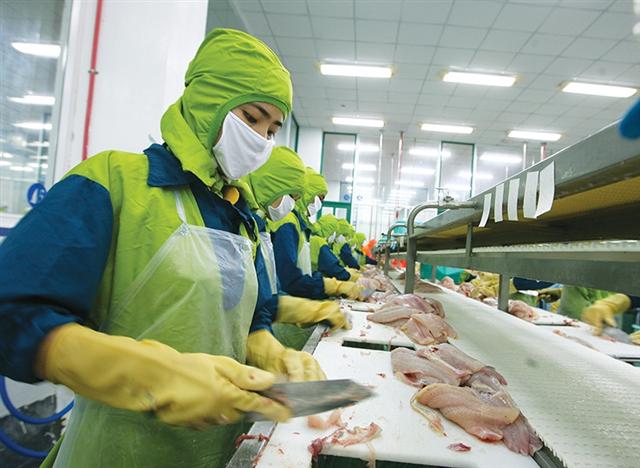
The United States is already Vietnam’s largest export market worldwide. Photo: Le Toan
|
A recent survey by compliance solutions provider QIMA pointed out that 43 per cent of US-based respondents cited Vietnam among their top three purchase locations as of early 2021, twice the percentage observed in 2019. Around 38 per cent of them also named Vietnam among the markets from where they plan to buy more during this year.
The report said that the appetite for sourcing from Vietnam is far from satisfied and is poised to redefine the supply chain landscape in 2021. The country has been a traditional first choice for buyers diversifying away from China, seeing its popularity among Western buyers grow by leaps and bounds over the past few years – a trend that has remained in 2021.
Vietnam witnessed 16 per cent on-year expansion in demand for inspections and audits from American and European brands in the first quarter of 2021, representing a third consecutive quarter of growth that had initially begun as a post-lockdown rebound in mid-2020. Growth is more than just a return to pre-pandemic levels, as inspection demand has, on average, doubled compared to the same period of 2019.
Vince Tran, senior manager at Walmart in Vietnam, said at a conference last December that the US retail giant is planning to expand the procurement of Vietnamese goods at its supermarket chains. Some potential products include footwear, handbags, apparel, wooden goods, food, agriproducts, and handicrafts. So far, Walmart has made inquiries about thousands of types of Vietnamese goods and purchased hundreds of them.
Meanwhile, according to Ken D. Duong, director of TDL International Law Firm, US buyers are increasingly sourcing products from alternative markets like Vietnam, presenting opportunities for local suppliers to get major orders. Also, Vietnamese Americans are actively seeking local suppliers to export Vietnamese goods to the United States.
Commenting on these growing activities, Adam Sitkoff, executive director of the American Chamber of Commerce in Hanoi (AmCham), told VIR that there are many US importers and retailers that rely on products made in Vietnam. This spans a wide range of goods – everything from clothes and shoes, to backpacks, seafood, and consumer electronics.
The US is already Vietnam’s largest export markets, and the latter receives billions of US dollars of foreign investment from US companies each year – much of it to build integrated supply chains that benefit American consumers.
“Recent growth in Vietnamese exports is partially due to the strong economic recovery and consumer spending in the US,” Sitkoff said. “However, most of the export growth to the US appears to be driven primarily by the relocation and reassessment of supply chain sourcing from China to Vietnam.”
Data from the Vietnamese General Statistics Office (GSO) showed that the US continues to be Vietnam’s largest export market with the total turnover of $30.3 billion in the first four months of 2021, up 50.1 per cent on-year. Many items with a turnover of $1 billion or more include furniture, textiles, footwear, computers, electronic components, and so on. It is forecast that by the end of this year, the US will remain one of the largest export markets for Vietnam.
As reported by The Wall Street Journal, the American share of Vietnam’s overseas sales has risen considerably based on Vietnamese export data and US data for imports. In the 12 months through January, US imports from Vietnam were equivalent to about 29 per cent of the Asian country’s total exports, far higher than the roughly 20 per cent average before 2019.
Stephen Olson, a research fellow at the Hinrich Foundation, told VIR that the punitive tariffs placed on China by the US created a financial incentive for American buyers to source products from Vietnam which they might have previously sourced from China. However, the tariffs only accelerated a trend that was already underway. “As wages and other costs in China have been increasing in recent years, Vietnam has become an increasingly competitive source for many manufactured products,” Olsen said.
In line with this trend, he noted that Vietnam will benefit from increased employment and production, but there are also some challenges that will have to be successfully managed. Greater manufacturing activity will have to be conducted in a way that is sustainable from both an environmental and social point of view. If not, the benefits will be offset over the longer term.
AmCham’s Sitkoff added whether Vietnam can take advantage of the opportunity to sell more to the US depends on how well the government does at creating a favourable business climate here. It is critical that US companies and investors here encounter an equal, level, and predictable playing field, Sitkoff explained. Reducing unnecessary administrative procedures, crafting clear and fair policies – especially with respect to customs and tax inspections – and making good decisions on key infrastructure investments will help attract more trade and investment from US corporations.
|
Tran Van Quy - General director, Trung Quy Textile and Garment Company We have experienced an influx of new American buyers in the past two months, up 60 per cent against last year’s period. The company is one of the key material suppliers of cotton fabrics to Vietnamese garment businesses that make apparel for exports to the United States. The increase in orders is attributable to the consumption recovery in the US market as well as the diversification efforts by US buyers. Specifically, the US procurement for textile materials is shifting to Vietnam from India and China. Garment orders are on the rise in Vietnam as neighbouring markets like Myanmar, Cambodia, and Laos are struggling with a huge surge in COVID-19 cases. Vietnam’s textile and garment producers will receive more orders as the US economy rebounds. However, due to the impact of the pandemic, they must reduce prices and compete to get large orders. Thus, they will not make profits like pre-pandemic levels, but it will help them to maintain operation to survive the pandemic. Truong Dinh Hoe - General secretary, Vietnam Association of Seafood Exporters and Producers The US is currently Vietnam’s fourth-largest importer of seafood. In the first four months of 2021, the US imported around $450 million worth of seafood from Vietnam, up 21.3 against last year. It is expected that orders will increase in the coming months as the US is in higher demand for seafood products from Vietnam like shrimp, basa, and others. Meanwhile, India, the largest shrimp supplier to the US, is facing obstacles in production due to the heavy pandemic crisis. Normally, the peak season for seafood products is at the year’s end. However, since the outbreak of the pandemic last year, many American stayed at home to curb the spread of coronavirus, which resulted in a sharp decrease in out-of-home food consumption. As more American have been vaccinated recently, the pent-up demand for out-of-home food consumption will rise in the next few months. Therefore, Vietnamese seafood exporters are ramping up production to keep up with the surge. Nguyen Chanh Phuong - Deputy chairman, Handicraft and Wood Industry Association of Ho Chi Minh City The US currently accounts for 60 per cent of Vietnam’s wood and wooden furniture exports. In the first months of 2021, the industry witnessed a 40 per cent increase of exports to the US compared with the period last year. US buyers are increasingly sourcing wood and wooden furniture from Vietnam due in part to additional tariffs on Chinese wood products and the supply chain disruptions in the EU. Unlike other industries, the demand for Vietnam’s wood and wooden furniture products is high when Americans stay at home during the crisis. As more people can go out after vaccination, the need for wood products in commercial projects can rise. However, this is not the strength of Vietnamese wood exporters, who mainly produce in-house furniture. As the pandemic is yet to be over, it means there are still opportunities for Vietnamese exporters to supply in-house furniture to the US market. US buyers pay higher prices to get quality products from Vietnamese suppliers to meet the stay-at-home trend. However, the surging material expenses are making it difficult for local companies to make profits. Overall, we predict Vietnam’s wood and furniture industry this year will grow about 18-20 per cent thanks to the rebounding demand in the US. |






